

Max Davies
How Audi, BMW, Honda, Mercedes-Benz, and Suzuki started out in Australia, and where they are now
3 Hours Ago
The bonkers N Vision 74 prototype feeds over 500kW to the rear wheels, which results in crazy acceleration and even crazier cornering.
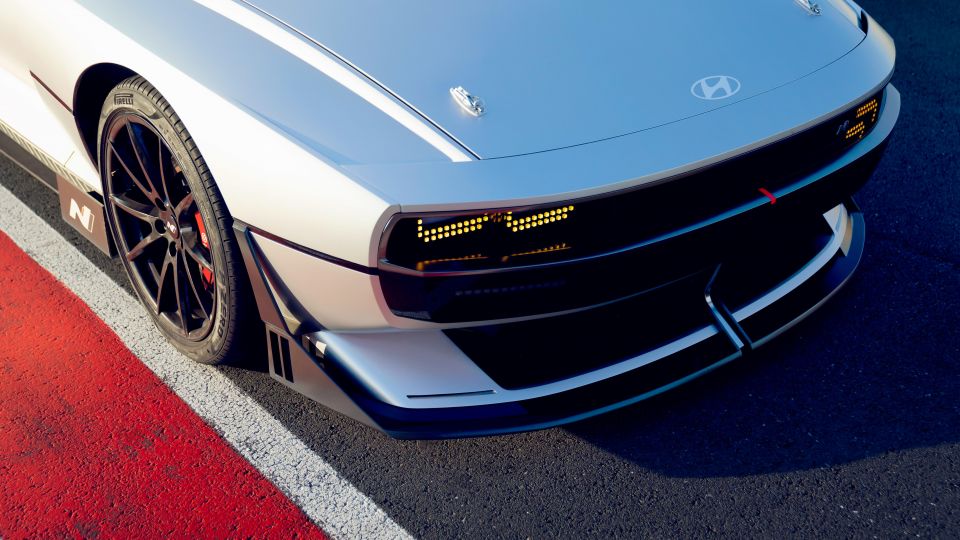
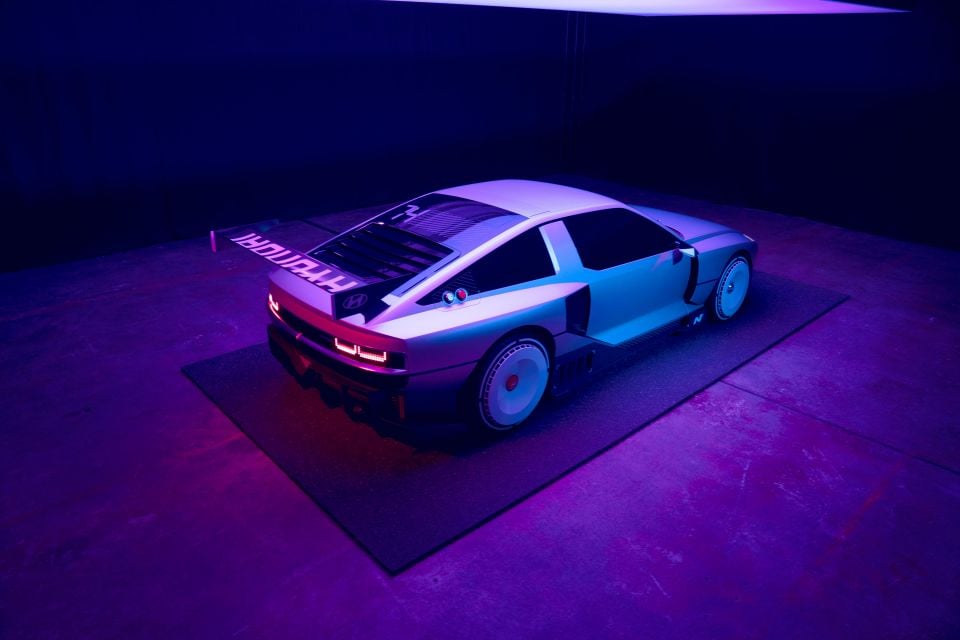

Founder

Founder


Founder

Founder
Where expert car reviews meet expert car buying – CarExpert gives you trusted advice, personalised service and real savings on your next new car.
Hyundai wowed the world with the N Vision 74 concept revealed at the recent Busan motor show. The rolling lab concept debuted hydrogen technology specifically tailored for a sporty vehicle application.
Not content with sticking to just one form of propulsion, Hyundai now develops a mix of internal combustion, plug-in hybrid, battery electric and hydrogen technology, with the Hyundai N Vision 74 taking it one step further with a particular focus on high performance.
The design is incredibly striking and was modelled off Hyundai’s original Pony Coupe design. The Pony Coupe was penned by Italdesign and went through around four years of refinement before the project was axed given a lack of suitable chassis and engine for the platform.
That design was then used to form the production version of the DMC-12 DeLorean, which is why the design’s silhouette looks so similar.
Fast forward to today and Hyundai’s head of design, SangYul Lee used the Pony Coupe as the basis for the N Vision 74’s design.
It may look like a pint-sized coupe in pictures, but it’s a whopper in person. It’s longer than a Mercedes-Benz E-Class and sits on a wheelbase that stretches just short of 3000mm.

While the car shown at the Busan motor show was a design mockup without an interior, Hyundai actually built a fully functional prototype and invited an exclusive group of journalists to drive the vehicle at a race track in Germany.
Typically we wouldn’t go anywhere near a prototype and if we did, it would be in the passenger seat. To be given access to drive this one-of-one prototype on a race track is unheard of, so we jumped at the opportunity when the invitation arrived.
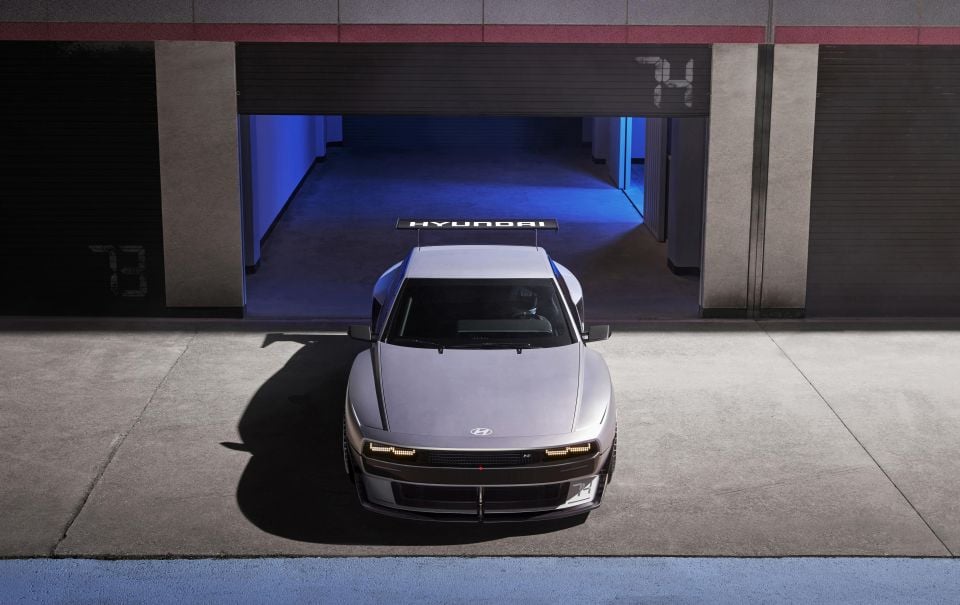
Many hydrogen vehicles on the market today work by using a hydrogen fuel stack to generate electricity that drives an electric motor, while also charging a small battery.
The fuel stack is then able to drive the motor(s) directly and under high throttle applications the battery will assist with supplying power. The only byproduct of this whole process is water, which exits the vehicle periodically.
How is the N Vision 74 different? It uses the same concept, except it teams with a much larger 62.4kWh battery and it sends torque through two electric motors mounted to the rear axle (one dedicated to each rear wheel).
It’s also rear-wheel drive, which is a step gone from other high performance electric vehicles, which typically use an all-wheel drive setup.
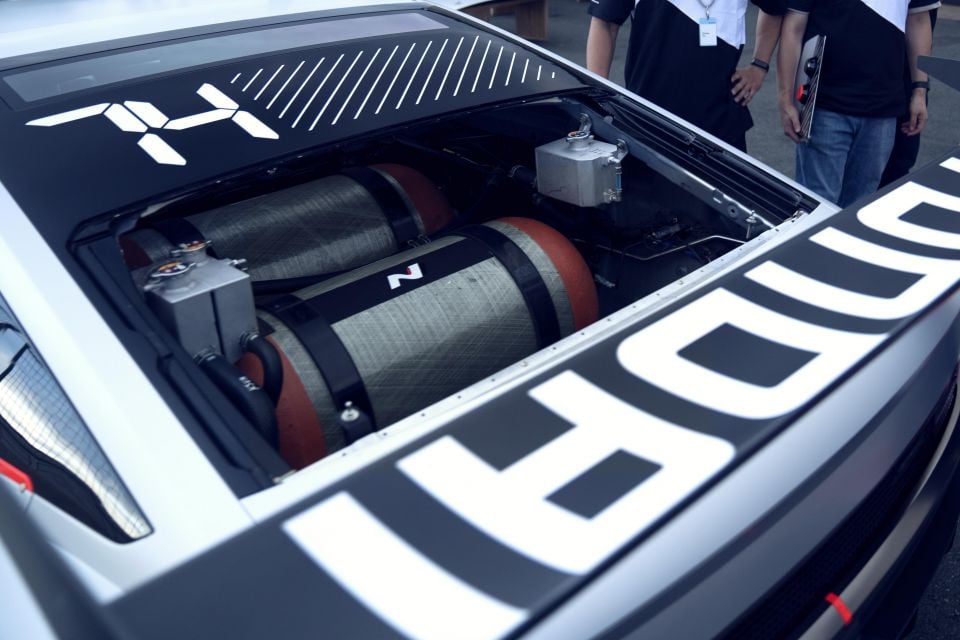
In addition to the battery pack, the N Vision 74 uses a set of two 4.2kg hydrogen tanks that sit atop the rear axle. In fact, Hyundai tried to put as much weight over the rear axle as possible to help with traction.
The hydrogen fuel stack sits beneath the bonnet and the battery pack is in a T shape with the wider portion of the T sitting over the rear axle.
Each electric motor produces 235kW, one decimated to each wheel. The fuel stack produces up to 95kW of power and when these power sources combine, the total system output is over 500kW of power and 900Nm of torque.
Hyundai hasn’t talked about how much the car weighs, but it claims it will do over 600km on a single charge/hydrogen fill.
Hyundai says the concept doesn’t sit on the E-GMP platform that’s common to the Hyundai Ioniq 5, Kia EV6 and Genesis GV60, but the N Vision 74 is capable of 800V charging.
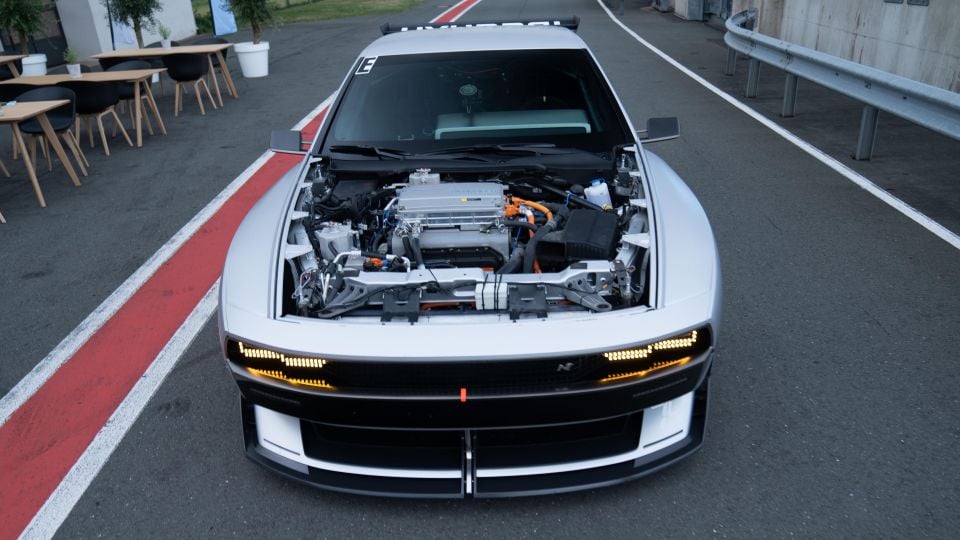
The physical packaging of the N Vision 74 includes a hydrogen fuel stack under the front bonnet. Under the rear slats you’ll find a set of two 4.2kg hydrogen fuel tanks.
These are joined by a set of cooling units that are fed by air plumbed in via the rear three-quarter panels. Front cooling is reserved for the battery system.
Beneath the hydrogen tanks are a set of two electric motors – one for each rear wheel. This setup provides far more granular torque vectoring control in comparison to a single electric motor or a clutch-based torque vectoring system.

While the vehicle was a one-of-one prototype, Hyundai didn’t hold back in terms of the driving experience.
We were able to do four laps of the Bilster Berg race track following a lead car, so we made sure to give it a red hot crack.
The car had a roll cage, race seats and four-point harness for the purpose of these track laps. And while it looked like a complete vehicle on the outside, it was very much all hand-built with many incomplete parts – only to be expected for something like this.
So we went into this expecting this to simply be an indicator of what it was like to drive as a prototype, more so than a complete product.
I’ll briefly touch on the size – it looks huge in person.

It has incredible presence and according to Hyundai, one of the reasons it has such big scoops either side and along the front is to take advantage of cooling. Hyundai sacrificed aerodynamics for added cooling.
Constantly attacking the throttle in an EV eventually brings with it power degradation. That’s all due to heat – heat in the battery system, heat in the motors and heat in the cabling.
Given heat increases with the square of the current drawn, Hyundai was able to mitigate power degradation and excess heat by using an 800V system – double the voltage compared to other EVs on the market means less heat thanks to that law – and also calling upon the hydrogen fuel stack more regularly to relieve the EV system from heat gain.
The huge cooling ducts then allow the entire system to be cooled even further for longer and harder driving.
We set off with the weight of driving a one-of-one prototype on a track I’d never driven on before, but I was still determined to have a go to see how driving a 500kW rear-wheel drive hydrogen-powered sports car would feel like.
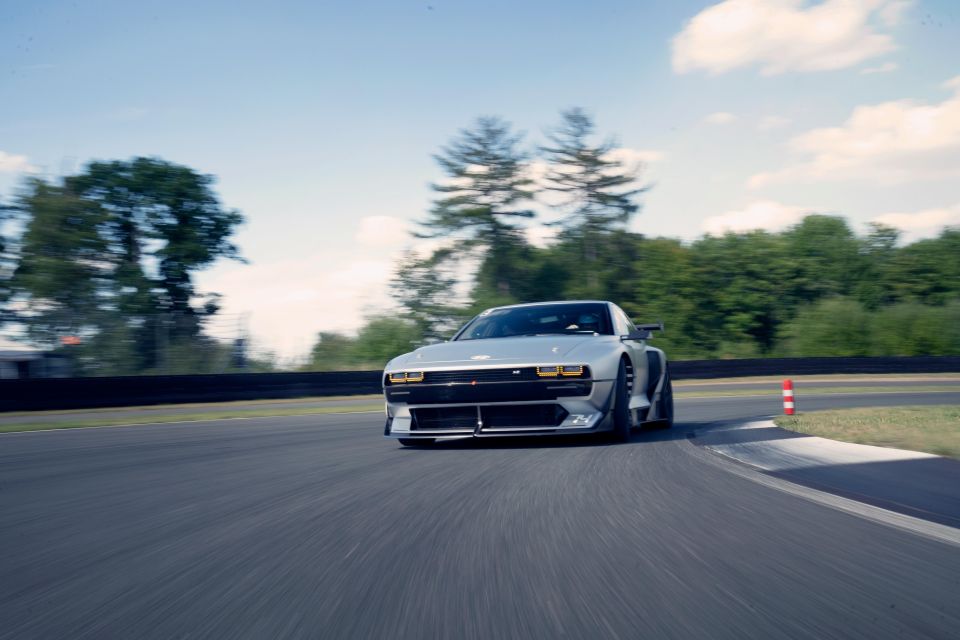
The steering was direct and very sharp, and while 500kW at the rear axle may seem a little crazy, Hyundai employs a virtual limited-slip differential to manage all that grunt. So in regular driving it acts as an open differential, giving you somewhat limited acceleration to maintain driveability.
But, when it’s switched into its track mode, the car’s computer limits slip at the rear by acting like a limited-slip differential. This makes the N Vision 74 feel like a high-powered Aussie sports car with ridiculous amounts of punch available when you hit the throttle.
It’s super darty and very keen to be thrown around. The lack of engine sound means that you’re constantly surprised each time you look down at the tachometer to see some big numbers popping up on the screen.
It’s a surreal experience. Without knowing the weight, it’s hard to get an understanding of what we’re working with when it comes to mass, though it does feel big and heavy behind the wheel.
Perhaps the sheer mass was most evident when the brakes started to fade at the end of our last lap. Despite being fitted with a meaty set of Brembos, they were feeling the pain of some fast laps by the end of it.
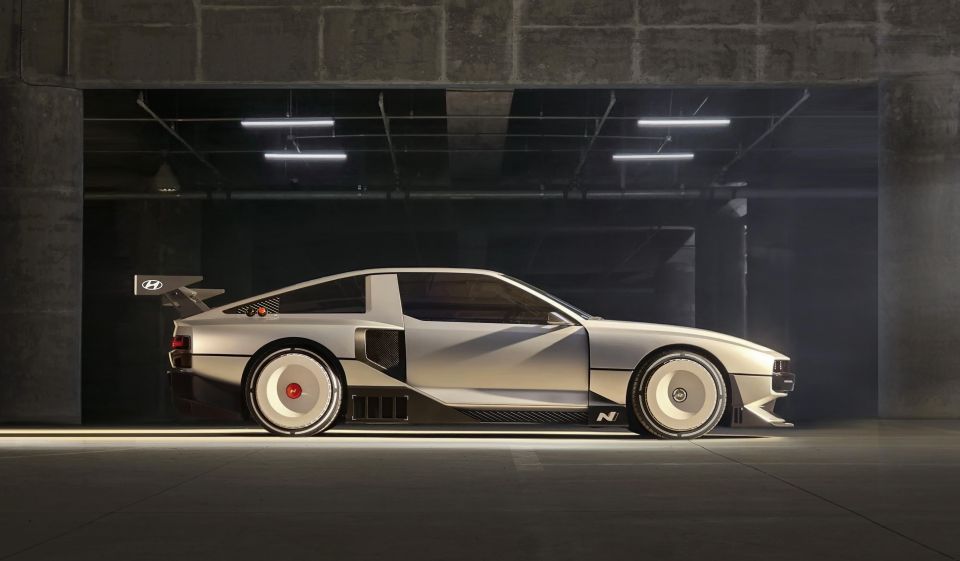
Brands like Hyundai and Toyota realise the future may not just be electric vehicles. Some countries have barely enough electricity to run lights, let alone charge power-chugging EVs.
The technology basis for the N Vision 74 actually came from Hyundai’s Xcient fuel cell truck. By working on technology like this for commercial and trucking applications, the brand can experiment with what this would look like in a passenger vehicle application.
While hydrogen takes a significant amount of energy to create and then transport, there may still be a time and place where this type of tech makes sense in passenger vehicles and sports cars.
Ultimately, the goal is to reduce and eliminate tailpipe emissions and the technology to make that happen will be dictated by customers.
This was an incredibly cool experience and it’s great to see companies thinking outside of the box and looking beyond just battery electric vehicle tech.
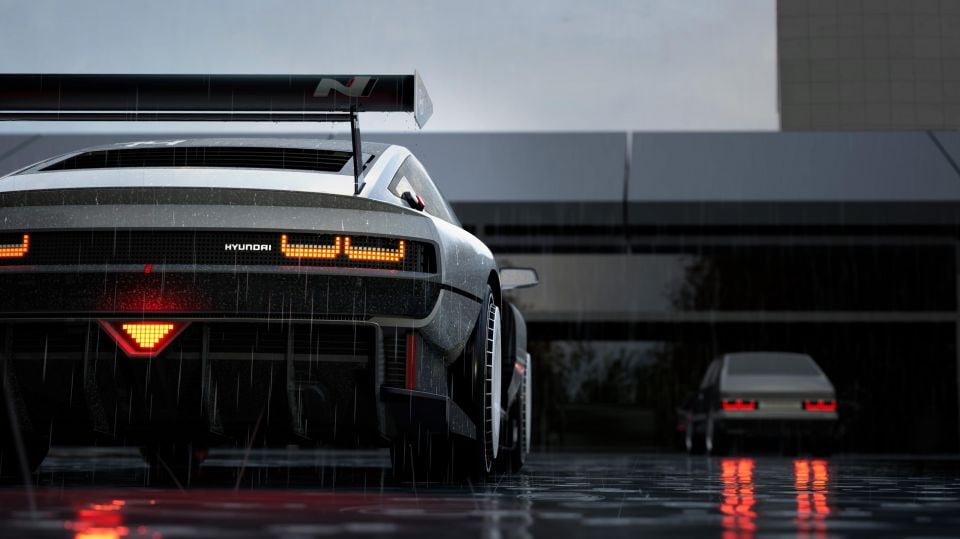
Click the images for the full gallery
You can watch a walk around video of the Hyundai N Vision 74and follow Paul Maric on TikTok.
Where expert car reviews meet expert car buying – CarExpert gives you trusted advice, personalised service and real savings on your next new car.
Paul Maric is a CarExpert co-founder and YouTube host, combining engineering expertise with two decades in automotive journalism.


Max Davies
3 Hours Ago


William Stopford
3 Hours Ago


Derek Fung
3 Hours Ago


Max Davies
11 Hours Ago


William Stopford
1 Day Ago


Ben Zachariah
1 Day Ago